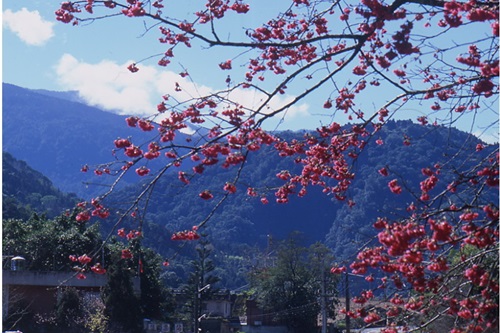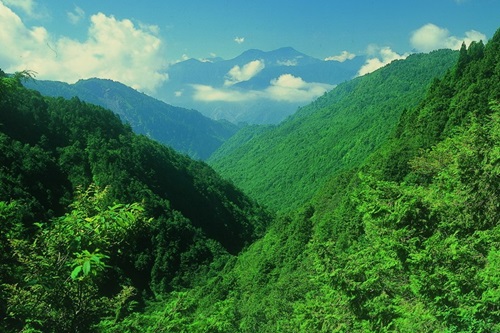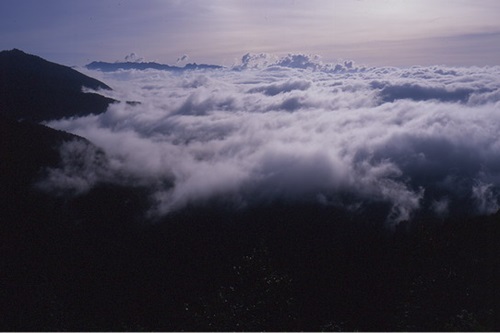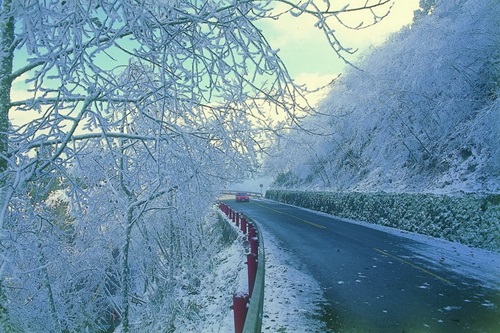Yijhuan Route 1
Yijhuan Route 1, completed in 1977, used to be a forest road in Taipingshan but was licensed to convert into a highway in 2002. Its starting point is Tuchang and ending point is Taipingshan Villa, and it constitutes the trunk road connecting Taipingshan and outside world. As you entering the route, you will observe the gradually changing views along the route when the elevation is increased from 300 m to 2,000 m.
Elevation and Temperature
In the section between Lanyang River valley and Tuchang, the elevation change almost cannot be perceived. However, after Tuchang, you will become sensitive to the lowering temperature outside your car window because of the elevation change. Interestingly enough, the plants on the roadside can be a clear indicator of the degree of elevation change.
Pioneer Plants
Pioneer plants, which usually exist on newly cultivated area or open land, can adequately play the role of indicator of elevation change. At the low and medium elevations, India-charcoal Trema and Roxburgh Sumac are two representative pioneer plants, especially at Jioujhihze area on the Yijhuan Route 1. As the elevation increased, Alnus formosana becomes the best indicator in high elevation. The color of its leaves will change according to the seasons.
Ground Cover and Slope Plants
The other pioneer plants, which are not as conspicuous as the previous ones, are those ground cover and slope plants, such as Wild Yam, Dooryard Weed, Lawn Pennywort, Asiatic Pennywort, Mock Strawberry, Blue Pig-ear, Mazus pumilus, Dwarf jo-jo, Farfugium japonicum and Helonias umbellate. They usually exist closely together on the road without tar or concrete surface and their colors will change in different seasons. At higher elevations, Nodding Clubmoss and Common Foxglove usually can be spotted on moss, rocks or even cliffs and, especially from Apr. to Jun., the scene of hundreds of thousands of strings of bell-shaped purple flower of Foxglove swung in the wind is extremely beautiful.
Appearance of Natural Forest
At the locations away from the highway, you can find virgin forest or the secondary forest after timber harvest in the early days. At lower elevations, most of the tree species are broadleaf trees with evergreen, glossy and elongated leaves. For examples, the Lauraceae family, Mulberry family, Fagaceae family and Urticaceae family. Not only there is a variety of trees but is also a variety of animals. As the elevation increased to 1,000 m or so, those plants with fall colors become predominant, such as Green Maple, Taiwan Red Maple and Taiwan Sassafras. Sometimes, even Cherry Blossom can be spotted here and there.
Street Tree and Artificial Forest
Yilan Branch, Forestry and Nature Conservation Agency has planted Green Maple and Hong Kong Orchid Tree as street trees in Taipingshan. On the other hand, Japanese Cedar forests are usually planted to replace the original broadleaf forest or Taiwan Cypress forest, which often make visitors to have an illusion of travelling in North America or Europe. Beneath the Japanese cedar forest, usually there are Common Tree Ferns, a fern resembling sub-tropical plant. Besides Japanese Cedar, at higher elevations, you also can find the aligned rows of artificial forests of Taiwan Cypress and Taiwan Hinoki.
François Auguste René Rodin: Beauty is everywhere. For our eyes, there is no shortage of beauty but a shortage of discovery. If you visit Taipingshan next time, please find a place to stop on your way and savor leisurely the beauty of Mother Nature and its abundant ecosystem before arriving at your destination.
- Fans Group for Taipingshan




